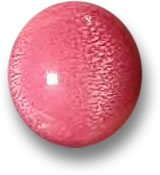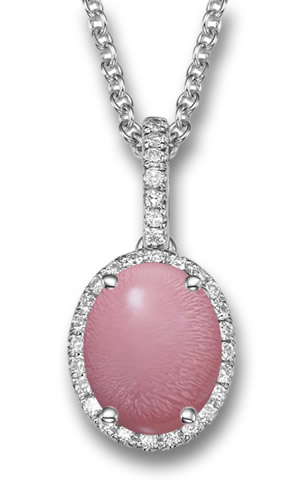|
|
Your Details
|
|
Your Details
|
Reviewed By Andreas Zabczyk
Conch Pearls, the Flamed Pink Queens Pink Conch Pearl
Many are familiar with South Sea pearls, freshwater pearls, and Mikimoto pearls, which are mainly sourced from oysters and mussels. Due to the rarity and high cost of natural pearls, pearl culturing techniques have been developed to make these exquisite gemstones more accessible. While naturally occurring pearls from oysters are rare, there are even rarer and more valuable pearls that command exceptionally high prices. Rare conch pearls (also pronounced "conk", with the plural "conchs", sounding like "honks"), or "pink pearls" come from conches. A conch is a type of sea snail that has a beautiful spiral-shaped shell. Unlike oysters, it is a gastropod (meaning "stomach foot") with a single shell, rather than a bivalve with two hinged shell parts. Conch shells are often sold as tourist souvenirs in tropical countries such as the Bahamas. The shells are also prized for the sound that they make when pierced and then blown through, as demonstrated by the boys in the novel by William Golding, and movie, "Lord of the Flies". In Victorian times, conch shells were used for the carving of cameos. Conch pearls became popular later, during King Edward's reign and can be seen in some Art Nouveau jewelry pieces. Recently, conch pearls have become popular once again, and have been seen in high jewelry designs. The conch itself is eaten in some countries. A perfect, pink pearl at the end of a plate of conch salad would be a delightful surprise! Strombus Gigas (Queen Conch) ShellConch pearls are harvested from several types of marine gastropod, including the queen conch. The queen conch comes from tropical waters in the region of the Gulf of Mexico to Brazil. It has the scientific name Strombus gigas and can live for up to 40 years. The queen conch lives in fairly shallow waters of no deeper than around 20 meters. This means that it can be easily harvested. In fact, these creatures have been in decline due to overfishing. Thus, the queen conch is now a threatened species. The fishing of queen conches is regulated in several countries and it is now illegal to harvest the queen conch off the coast of Florida. Conch pearls are highly valued for their beautiful color, symmetry, porcellaneous (porcelain-like) luster and attractive oval shape, though they can also occur in baroque (irregular) shapes. The most desirable shape for conch pearls is oval. Some purists argue that conch pearls should not be referred to as "pearls" because they do not exhibit the luster of conventional material from oysters or mussels. The CIBJO (the World Jewellery Confederation) defines conch pearls as "non-nacreous natural pearl consisting of calcium carbonate arranged concentrically in a crossed lamellar microarchitecture... also known as pink pearls". Conch pearls are best known for being pink, but also occur in white, brown and orange. White conch pearls are extremely rare, and golden yellow conch pearls are known as "golden pearls". The hardness of conch pearls is higher than that of traditional oyster pearls and conch pearls are considered to have a good level of durability. However, like some other gemstones, the color of conch pearls is known to fade after prolonged exposure to direct sunlight, so they are not recommended for everyday jewelry wear.  White Gold and Diamond Conch Pearl Necklace Pendant
The surface of some conch pearls has a distinctive pattern and slight iridescence which makes them easily identifiable. This pattern can sometimes be easily seen with the naked eye (see, top image). This is termed "flame structure" and is the result of microcrystalline fibers that are partially aligned. A clearly visible flame pattern is most desirable. For hundreds of years, it was not possible to culture conch pearls, so these rare gems remain unattainable treasures for most people. This has caused the emergence of some ingenious imitations, such as glass, coral and pieces of shell. The buyer must be careful to avoid such materials. American scientific journals have reported the successful development of cultured queen conch pearls by the Florida Atlantic University Harbor Branch Oceanographic Institute (HBOI). This opens up the possibility for the commercial production of cultured conch pearls. Moreover, Dr Héctor Acosta-Salmón and Dr Megan Davis managed to produce cultured pink pearls without sacrificing the life of the queen conch in the process. Perhaps this means that one day in the future, cultured conch pearl gemstones will be available to jewelry lovers all over the world, allowing everybody to enjoy the beauty of pink pearls. |
